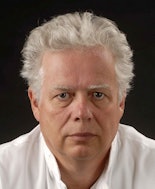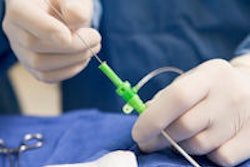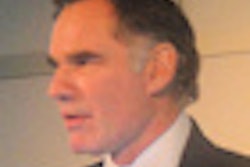
Radiologists should be like an active spider in a web, and must take the future into their own hands and not act like an ostrich, according to a thought-provoking and visionary editorial by one of Europe's leading interventional radiologists, Dr. Jim Reekers, PhD.
"I think the analogy with the spider is a good metaphor, because a real spider has a large web and everything that touches his web, even at the edge of the web, is noticed and leads to immediate action by the spider. Usually he then eats what he has caught in the web -- something we should not do, of course. But in the spider model, the radiologist should have a network that allows him to notice and detect everything that happens within his subspecialty territory. And the territory should be as big as the subspecialization of his soulmate, the clinician," he noted in an online article published on 21 May by Insights into Imaging.
 We have an obligation to young colleagues who are entering radiology today, said Dr. Jim Reekers, PhD.
We have an obligation to young colleagues who are entering radiology today, said Dr. Jim Reekers, PhD.
Furthermore, if there is some disturbance, even at the periphery of this network, the radiologist should be proactive, explained Reekers, who has been a staff radiologist at the Academic Medical Center at University of Amsterdam since 1986 and professor of interventional radiology at the University of Amsterdam since 1999.
Whereas radiologists used to survive because of their ownership and subsequent storage of images, now they must be clinically involved, and the "radiology spider" should be a teacher, a subspecialty spokesperson, initiator of science, and a radiology union person rolled into one, he said.
"An important step -- not just symbolic -- is to abolish radiology request forms and replace them with consultancy or advice request forms," he advocated. "Radiology should be leading in imaging and initiate new imaging opportunities, before clinicians ask for it. Radiology should be leading in multidisciplinary teams and organize digital medical rounds at the radiology department. Radiology should set the agenda and timelines for these multidisciplinary teams."
Today's radiologist should be a doctor and an up-to-date clinical specialist too, and must build clinical-diagnostic units around medical subspecialties, he stated. Future radiology departments should consist of many clinical diagnostic units.
"Of course, a radiologist can also be a spider in more than one clinical unit. However, these units should not function as stand-alone units but should be overlapping with cross-fertilization regarding imaging developments. To achieve this, radiology departments should have their own weekly grand-round and scientific meetings," Reekers added.
An internal radiology website can help to achieve this, but communication is the magic word, not only with the clinicians but also in a radiologist's own department. By adopting the spider model with clinical-diagnostic units in the hospital, radiology can stay of added value and at the same token be supportive, this time not only to the clinician, but now also directly to the patient, he noted.
Subspecialization carries an inherent risk of erosion and fragmentation of radiology as a specialty, but things cannot and will not stay as they are today. "We have this obligation to our young colleagues who are entering radiology today. Only if we start building these new departments today will radiology still have a glorious future. However, if we outsource ourselves, I have serious doubts about our future," Reekers wrote.
He thinks the European Society of Radiology (ESR) should coordinate subspecialization with teaching and accreditation. Subspecialty societies, under the leadership of ESR, should get more closely involved in the future of radiology. A strong organization is necessary, but active ambassadors for radiology at the various subspecialty areas are also vital.
Just as clinicians have become subspecialized, both subspecialization and clinical involvement will be crucial for future radiologists. Visibility of the radiologist is important too, Reekers noted. He is concerned that the public perception of a radiologist's work is very poor, and many people think radiologists are not doctors and have not received medical training.
Imaging modalities and options have been revolutionized and have become the cornerstone in diagnoses and treatment in any hospital, but at the same time, demands on radiologists have grown and it is impossible to oversee everything and to be an expert in radiology at large.
"It is also no longer the picture, but all the diagnostic image investigations in the context of the whole clinical decision-making that is important. The key element in this now is multidisciplinary communication on the interpretation, not by report or wire, but real communication in patient discussions and teams," he concluded.



















